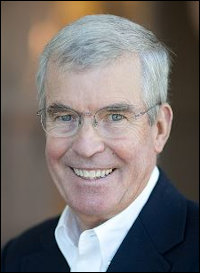The debate now raging over the tradeoffs between saving lives and economic disruption is clouded by oversimplification. The solutions we ultimately adopt will not be some groundless elimination of protective measures on Easter Sunday, any more than they will call for quarantining everyone, everywhere until some arbitrary date in July or September. The answer must be much more nuanced.
America has three strategic goals to address, in this order: First, buy time until we can get our health care system capacity upgraded to handle the flood of cases that epidemiologists can predict are coming to each city and region of the country. Second, get our testing capacity and the infrastructure needed to deploy it, distributed across America so we can tell who is infected and begin the random testing needed to model mathematically where and when the virus will spread. Third, quickly develop a set of protocols that can be used to identify those who can go back to work and who may circulate publicly without risk to the most vulnerable.
We need only look at New York City, Italy and Spain to see what happens when the virus peaks in a community before the health care system is prepared. Everywhere across America, including here in Virginia, our hospitals are running low on personal protective equipment (“PPE” – like N-95 face masks, gowns, and gloves). Our doctors and nurses can’t care for the critically ill if they themselves are infected.
Equally important, nationwide we need hundreds of thousands more ventilators to treat the coming tide. The long-hyped era of “death panels” could soon be upon us. A hospital with only 25 respirators, all in use, must not ask its ER physicians to decide what to tell the 26th patient. Today, we have numerous hospitals who can clearly see these unacceptable quandaries coming. We must keep protective measures in place just long enough to solve the worst of the PPE and ventilator shortages. Only then can we risk raising the infection rate.
The second shortage we must address is testing. Everywhere outside a few of the best managed health systems (like Singapore’s) we have epidemiologists “flying blind.” Nowhere in America do we have any accurate data on the percentage of infected people (the “carriers’) or the rate at which the virus is multiplying across the population on a local scale. Further, we have no reliable data to suggest the relative level of risk across different cohorts of the public. We have only anecdotal evidence about differences between genders, ages, blood types and people with certain co-morbidity conditions like COPD.
Only with broad randomized testing can we accurately predict where and when the virus will spread and who we can safely release to get back to rebuilding our economy. We must get testing equipment out to our communities in weeks not months, before the economic damage is catastrophic. Scientists at the University of Virginia have shown the way, developing their own custom-designed testing equipment that is already capable of testing hundreds of patients per day.
Third, we must call on our experts across multiple fields – virology, epidemiology, medicine and data science – to immediately begin developing a list of protocols that will allow us to soon apply protective measures vertically across segments of the population instead of horizontally, indiscriminately quarantining the sick, the well and the immune with blanket denial of access to work and society. We already know that those who have been infected, have recovered, and have been isolated for (scientists now estimate) 14 days should be safe to go out together to dinner and a movie tonight. Today brings news of a simple blood test that will allow us to identify anyone with COVID-19 antibodies. Identifying these people who have likely been infected but are asymptomatic and now immune could increase the number of people going back to work by multiples of the number of recovered patients.
Similarly, testing data and analytics should allow us to identify broad numbers of people who are yet uninfected, but at low risk of severe, life-threatening illness. Two hypothetical examples: every woman, under the age of 60 with Type O or B blood and no chronic underlying illness from a short list might be in one cohort; while another cohort might include men, under the age of 55 with Type O blood and absolutely no chronic underlying illnesses from a longer list; and so on. Or, experts might develop a “score” that produced a sum from a longer list of each individual’s conditions. If we can develop such protocols and empower family physicians and primary care doctors to certify each of their patients, we can put hundreds of thousands of Americans back to work – as soon as our hospitals are adequately supplied to deal with the inevitable increase in case loads.
This more nuanced approach should save many lives in the short term, get a large number of Americans back to work in May or June, and buy us the time needed to clinically test both new therapies and vaccines. Epidemiologists and data scientists, like those at UVA’s Biocomplexity Institute and Initiative can predict now a second wave of infections coming late this fall. With a proven set of protocols that can keep our businesses running, with hospitals fully prepared, and hopefully with approved therapies ready to treat the sick we can avoid a repeat of the current crisis and keep our economy climbing back out of the deep hole we’ve created. If, by this time next spring we have a vaccine then the COVID 19 Depression could yet be “V” shaped.
Jim Murray, a Charlottesville resident, is founder of the Court Square venture capital firm and Rector of the University of Virginia Board of Visitors.


Leave a Reply
You must be logged in to post a comment.